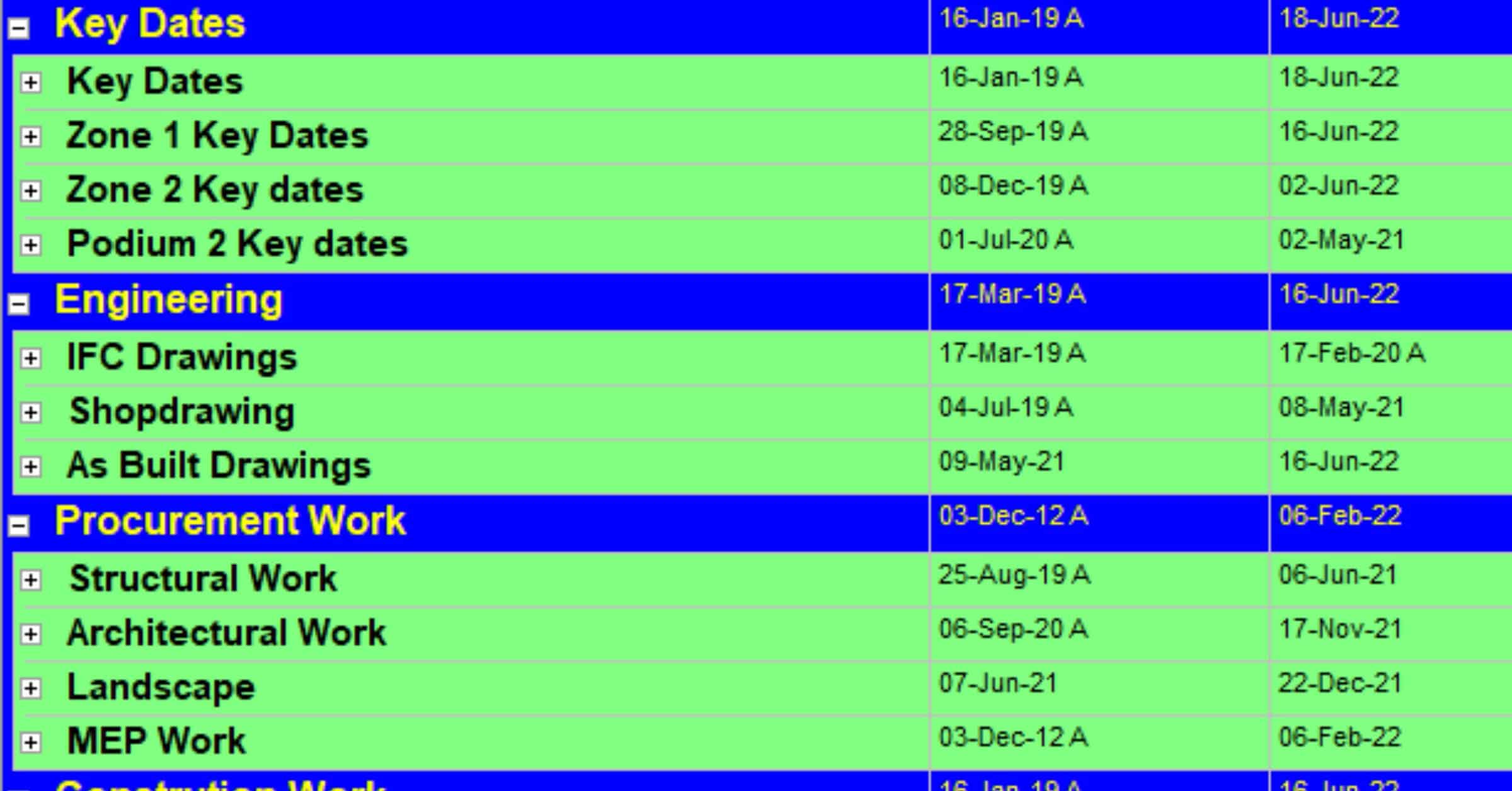Level 2 Schedule is a Management Summary, also known as a Summary Master Schedule (SMS). The Level 3 Project Coordination Schedule is still kept as a summary (s). It depicts the overall project broken down into its major components by area and is used for higher-level management reporting. Frequently developed by the ‘client’ as part of its commitment planning for the project and then maintained by the contractor. Can be used to integrate multiple contractors / multiple project schedules for overall program control.
Level 1 information will be expanded to show activities by area or major piece of capital equipment. Based on the project method statement, should demonstrate the driving path for structures and major process systems at the CSI Division Level (e.g., Earthwork, Foundations, Framing, Enclosure, MEP Services, and Process Equipment). This type of schedule’s target audiences include, but are not limited to, general managers, sponsors, and program or project managers.

Why Level 2 Schedule is important?
Level 2 schedules are typically prepared to communicate the integration of work throughout a project’s life cycle. At a high level, Level 2 schedules may reflect interfaces between key deliverables and project participants (contractors) required to complete the identified deliverables. Gantt (bar chart) format is most commonly used, with CPM network format being used only rarely. Level 2 schedules provide high-level information to help with project decision-making (re-prioritization and criticality of project deliverables).
Level 2 schedules aid in the identification of project areas and deliverables that require action and/or course correction.
Level 2 schedule’s target audiences include, but are not limited to, general managers, sponsors, and program or project managers.
These project-level schedules are activity and deliverable-centered plan that typically includes the major project phases and work features (e.g., conceptual design, detailed design, procurement, construction, commissioning, and close-out phases). They can be displayed in the form of a time-scaled network logic diagram or a bar chart.
Check everything you need to know about Master Schedule In Construction Management
Read also: Planning Engineer Interview Questions and Answers









